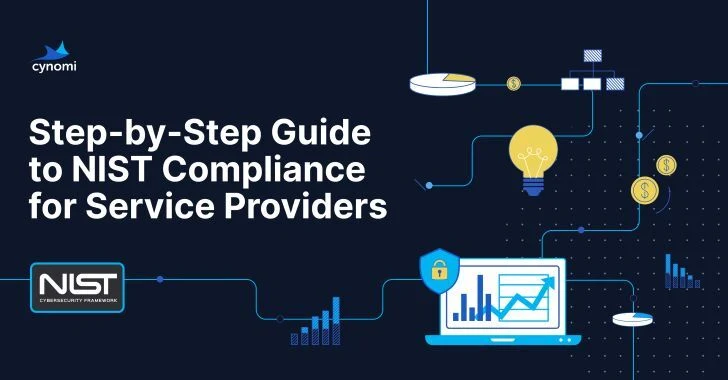
introduction
As the cybersecurity landscape evolves, service providers will play an increasingly important role in protecting sensitive data and maintaining industry regulations. The National Institute of Standards and Technology (NIST) offers a comprehensive set of frameworks that provide clear paths to achieving robust cybersecurity practices.
For service providers, adherence to NIST standards is a strategic business decision. Compliance not only protects client data, but also increases reliability, streamlines incident response and provides competitiveness.
The step-by-step guide is designed to help service providers understand and implement NIST compliance for their clients. By following the guide, you will see:
Understand the importance of NIST compliance and how it affects service providers. Learn about key NIST frameworks such as the NIST Cybersecurity Framework (CSF 2.0), NIST 800-53, and NIST 800-171. From conducting gap analysis to implementing security controls and monitoring risks, follow a structured compliance roadmap. Learn how to overcome common compliance challenges using best practices and automation tools. Ensure long-term compliance and security maturity, strengthen trust with clients, and increase market competitiveness.
What is NIST compliance and why is it important to service providers?
NIST compliance involves adjusting an organization’s cybersecurity policies, processes, and controls to standards set by the National Institute of Standards and Technology. These standards help organizations effectively manage cybersecurity risks by providing a structured approach to data protection, risk assessment and incident response.
For service providers, achieving NIST compliance means:
Enhanced security: Improved ability to identify, assess and mitigate cybersecurity risks. Regulatory compliance: Collaboration with industry standards such as HIPAA, PCI-DSS, CMMC and more. Market Differentiation: Establish trust with clients and position providers as trustworthy security partners. Efficient Incident Response: Ensures a structured process for managing security incidents. Operational Efficiency: Simplifies compliance with clear frameworks and automation tools.
Who needs NIST compliance?
NIST compliance is essential for a wide range of industries, including:
Government Contractors – Required for CMMC and NIST 800-171 compliance to protect controlled uncategorized information (CUI). Healthcare Organizations – Supports HIPAA compliance and protects patient data. Financial Services – Ensures data security and fraud prevention. Managed Service Providers (MSPs) and Managed Security Service Providers (MSSPs) help to ensure client environments and meet contractual security requirements. Technology & Cloud Service Provider – Enhance cloud security practices and align with federal cybersecurity initiatives.
The key NIST framework for compliance
While NIST offers multiple cybersecurity frameworks, some of the most relevant to service providers include:
NIST Cyber Security Framework (CSF 2.0): A flexible, risk-based framework designed for businesses of all sizes and industries. It consists of six core functions: identification, protection, detection, response, recovery, and management to help organizations improve their security attitude. NIST 800-53: A comprehensive set of security and privacy controls designed for federal agencies and contractors. Many private organizations employ these management to standardize cybersecurity measures. NIST 800-171: Focuses on protecting uncontrolled unclassified information (CUI) in non-federal systems, particularly for businesses working with the Department of Defense (DOD) and other government agencies.
Common challenges and ways to overcome them when achieving client NIST compliance
Here are some common challenges service providers encounter as they work to achieve NIST compliance and strategies to overcome them:
Incomplete asset inventory: Incomplete asset inventory is a common challenge due to the number of assets managed by an organization. To overcome this, many organizations rely on automated tools and routine audits to ensure that all IT assets are accurately considered. Limited budgets: Limited budgets are a frequent obstacle for many organizations, and it is essential to focus on highly influential controls, leveraging open source tools, and automate compliance tasks to effectively manage costs. Third-Party Risk: Third-party risks pose major challenges for organizations that rely on external vendors. To address this, many organizations conduct vendor assessments and perform regular audits to ensure compliance, including terms that are NIST-aligned in the agreement.
Proactively addressing these challenges can help streamline compliance, enhance security and reduce risk.
A step-by-step guide to achieving NIST compliance
As mentioned above, achieving client NIST compliance presents many challenges to service providers, making the process complicated and difficult. In fact, 93% of service providers struggle to navigate cybersecurity frameworks like NIST and ISO, and the astounding 98% reporting overwhelmed by compliance requirements only 2% express trust in their approach.
However, by adopting a step-by-step approach, service providers can simplify the process and make compliance more manageable and accessible to MSPS and MSSPs.
The main steps to achieving NIST compliance are:
Implementation of gap analysis Security policies and procedures Development of comprehensive risk assessments Security control document Compliance efforts to implement regular audits and evaluations Continuous monitoring and improvement
Check out our comprehensive guide for a detailed approach to achieving NIST compliance.
The role of automation in NIST compliance
By adjusting to NIST guidelines, providing a clear and standardized framework, MSPs and MSSPs can operate more efficiently, eliminating the need to create new processes for each client. Integrating automation tools such as Cynomi’s platform further increases efficiency by streamlining risk assessments, monitoring security controls, and generating compliance reports with minimal manual effort.
This approach saves time by automating risk assessment and compliance documentation, improves accuracy by reducing human error in compliance tracking, and simplifies auditing with pre-built reports and templates. Cynomi’s platform is particularly effective, reducing manual work by up to 70% while automating risk identification, scoring and compliance documentation.
Conclusion
Achieving NIST compliance is a critical step for service providers who aim to protect client data, strengthen security attitudes and build lasting trust. Structured Approach – When combined with automated tools, compliance can be more efficient and proactively managed. By adopting the NIST framework, service providers not only meet regulatory requirements, but also gain a competitive advantage in the cybersecurity market.
Check out our comprehensive guide here for information on how to achieve NIST compliance.
Source link

